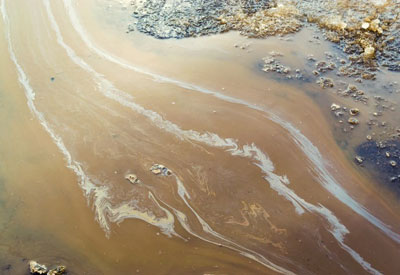| University of Colorado at Boulder | ||||||
 |
||||||
|
Source Water ProtectionProtecting Source Water in Colorado During Oil and Gas Development for a Colorado-specific discussion of both regulatory and non-regulatory protection measures Drinking water comes from both ground water and surface water sources. While all fresh water is a precious commodity in the arid West, drinking water sources deserve special protection. Many activities, including oil and gas development, can deplete or contaminate drinking water sources. Surface water can be contaminated by stormwater runoff and spills. Ground water can be contaminated through surface spills, leaking waste pits, or poor disposal practices. In rare circumstances, a poorly constructed oil and gas well may allow gas and other pollutants to escape due to incomplete casing or cement failures. On a national level, EPA provides a variety of resources for mapping source water areas, assessing the potential for contamination, and planning for source water protection. For information on protecting ground water sources during underground injection disposal of wastewater, see the EPA UIC Class II webpage or see “Disposal Issues” on our Water Quantity Resource page. Stormwater Runoff
Pollution from stormwater is an issue with all types of development from urban to rural areas. Regulation of stormwater discharges from oil and gas exploration, production, processing and treatment activities has been particularly controversial in the last few years. Resources on EPA's web pages address both the problem and some of the solutions. Regulation of Oil and Gas Construction Activities – A summary of the issues, legislation, regulations and litigation Stormwater Pollution Prevention Plans for Construction Activities – Information on Pollution Prevention Plans, permitting and BMPs Construction Site Stormwater Runoff Control – Addresses key BMPs to help municipal stormwater programs and construction site operators comply with the stormwater Phase II requirements. Regulating Stormwater – The Role of Federal, State, and Local Governments in Colorado – Explanation of the stormwater regulatory scheme and an example of how the regulatory scheme works in Colorado Pit PollutionPits – circulation, water storage, completion, flowback, and reserve – are dug to hold fluids and solids during well development and to dispose of waste from production. Pits may be lined or unlined, and their contents may be disposed of in many ways. Best management practices are essential for limiting pit pollution of both surface and groundwater New Mexico Oil and Gas Conservation DivisionPollution Prevention Best Management Practices (scroll down) Pollution Prevention Pocket Guide EarthworksAlternatives to Pits? Closed-Loop Containment System New Mexico Pit Rule Mapping PortalFunded by the RPSEA -Small Producer Program, the New Mexico Pit Rule Mapping Portal generates maps of potential site regulatory issues using government recommended data. These maps will help reduce time needed for evaluation, preparation and review of C-144 forms and attachments and allow better determination of optimal and allowed locations of pits and tanks with respect to current siting criteria.
|
||||||




